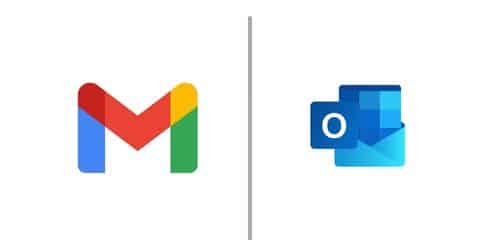If you’re anything like me, your day starts and finishes with a dance in your inbox. However, selecting the appropriate platform can transform this process into a smooth and effortless experience. A lot of bias is going on as users are divided between Gmail and Outlook, which led me to check out the two platforms (I’m a Gmail user though). Today, I’ll outline the features of the two platforms and allow you to choose.
Here’s a tip: If you’re more inclined toward Google, you’ll likely prefer Gmail; Outlook is more suited for Microsoft users.
Key Takeaways
- Both Gmail and Outlook have a similar user experience and interface layout.
- Outlook offers better integration with Microsoft products, while Gmail offers better third-party app integration.
- Outlook provides phone and email support, while Gmail only offers email support.
- Gmail is free to use with ample storage and features, while Outlook requires a subscription for the complete set of features.
- Outlook offers more customization options, while Gmail has a more user-friendly interface.
- Outlook is better suited for advanced users needing progressive email organization and management features, while Gmail is better for collaborative work and users prioritizing third-party app integration.
Gmail vs Outlook: General Overview
Outlook and Gmail are both powerful email applications, so certain factors won’t heavily influence the decision. The mobile apps have a similar user experience and interface layout. They both allow for some limited interface customization and offer paid business plans with comparable pricing. However, Gmail is slightly more affordable at certain levels.
Both platforms provide a range of similar features, such as the option to delay email notifications with the snooze function, as well as tools for scheduling emails to be sent at a later time and date. They both offer message reminders and helpful templates to assist with email management and composition.
Both Outlook and Gmail seamlessly integrate with their respective suites, Microsoft Office 365 and Google Workspace. Whether you’re an individual or an organization, the level of integration will heavily influence your platform preference. Both platforms have highly functional and meticulously designed applications. Unless you have a specific feature requirement, such as labels on Gmail or folders in Outlook, it is difficult to determine which one is superior. It’s similar to comparing a PC to a Mac.
Each platform also offers unique extensions that provide access to extra features and capabilities, helping to increase productivity and improve your workflow. (Gmail and Outlook have different names for these additional features.) Gmail offers a wide range of add-ons in the Chrome Web Store, providing a greater selection compared to Outlook.
Read Also: Email Management Tools: All You Need to Know
Now that we’ve seen a general overview of how both applications work, Let’s compare each of their features:
User Interface and Design: Gmail’s Streamlined Approach vs. Outlook’s User-Friendly Design
As someone who enjoys emails, I’ve grown to admire the simple and clean design of Gmail. The interface is designed to be clean and user-friendly, making it easy to navigate. However, for individuals who appreciate a sense of familiarity, Outlook’s interface closely resembles the traditional desktop outlook, offering a seamless transition.
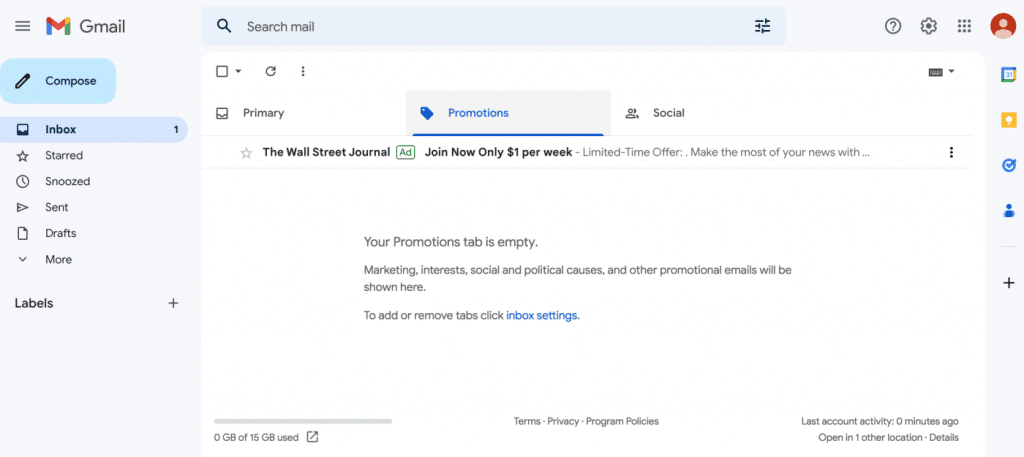
The Clash of Labels and Folders
I have always relied on Gmail’s labeling system to categorize my emails. It’s similar to having a meticulously arranged library where every book (email) is labeled with multiple tags. People who value the organized structure of folders may prefer Outlook’s folder system, which offers a more traditional approach.
Gmail vs Outlook: Features and Functionality
Gmail’s Search Expertise
Gmail’s search feature is truly revolutionary. It’s like having a dedicated investigator in your inbox. Discovering that hard-to-find email is effortless with the help of advanced search operators. Nevertheless, Outlook’s search feature is highly efficient, offering a seamless and user-friendly search experience.
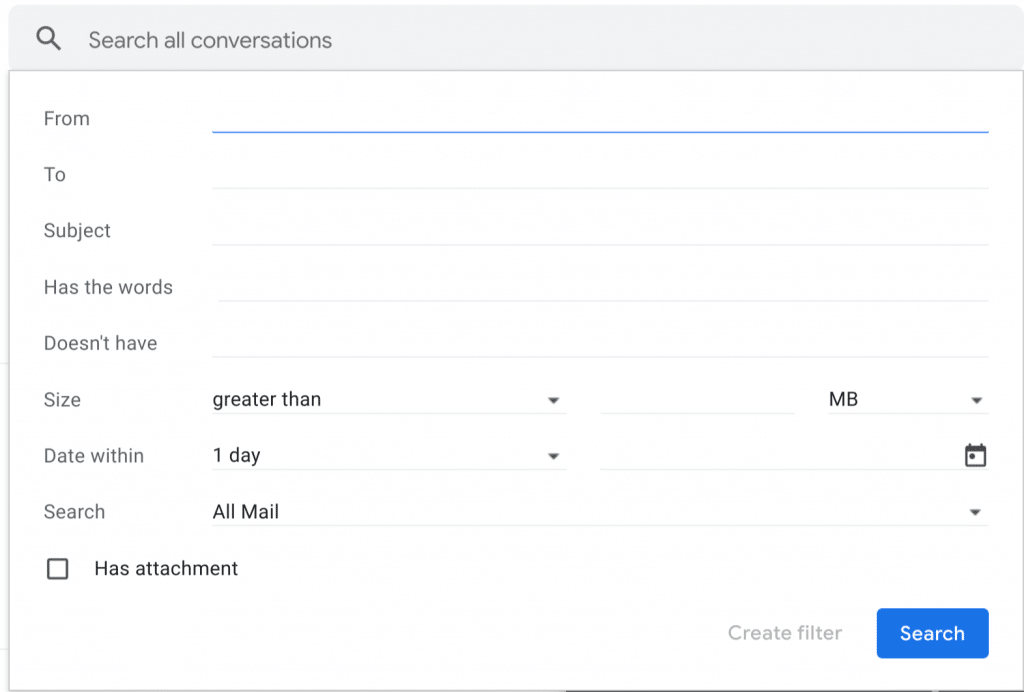
Outlook’s Calendar Integration
The integration of Outlook’s calendar is incredibly helpful in effectively managing schedules. I am impressed by the seamless synchronization between emails and calendar events, which ensures I am always on top of my schedule. If you value a comprehensive solution, you may find Outlook’s extensive features more appealing, although Gmail does offer a similar integration.
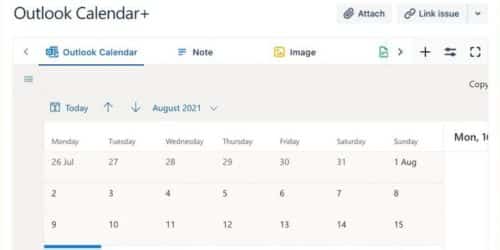
Read Also: HOW TO CREATE AN OUTLOOK ACCOUNT: Detailed Simple Steps
Gmail vs Outlook: Chat
According to research, a significant majority of customers, 46%, express a preference for live chat over email, which only stands at 29%.
Both Gmail and Outlook offer instant chat features. If you prefer a more efficient and direct form of communication, you’ll find it convenient to have a quick conversation with someone instead of engaging in lengthy email exchanges.
You can use Gmail’s built-in chat functionality whenever you need it. In 2020, Google Hangouts underwent a rebranding and became known as Google Chat.
The latter provides a service that is up-to-date, with a strong emphasis on teamwork and a seamless integration with the G Suite for an enhanced user experience.
Skype serves as Outlook’s instant messaging, video, and voice call feature. Skype boasts robust end-to-end encryption. Your message remains completely private and secure, ensuring that neither Microsoft nor anyone else can access it.
In addition, Skype boasts a sleek and contemporary design that surpasses Google chat. This option is much more visually appealing than the other one. The effectiveness of these two features is evident.
Read Also: CHATAPP: Best Team Chat Apps for Business and the Workplace
Gmail vs Outlook: Integration Capabilities
Google’s Integration with Gmail
As a dedicated user of Google Workspace, I absolutely love how Gmail seamlessly integrates with Google Drive, Docs, and other services. It’s a perfect combination for maximizing productivity. Collaborating on documents within the email platform is a significant improvement in workflow efficiency.
Outlook’s Microsoft 365 Synergy
Outlook truly excels in its seamless integration with Microsoft 365. Businesses that heavily rely on the Microsoft ecosystem can benefit from the smooth integration of OneDrive and Office applications, which enhances the user experience by providing a cohesive and streamlined workflow.
Gmail vs Outlook: Security Measures
Gmail’s Security Protocols
Gmail’s security measures are impressively robust and thorough. The robust security measures, including two-factor authentication, phishing detection, and automatic encryption, provide a high level of protection for your data. I have had no issues with Gmail, which is a clear indication of its strong security measures.
Outlook’s Multi-Layered Defenses
Outlook also boasts robust security measures that provide multiple layers of protection. The advanced link checking and powerful threat detection capabilities have successfully averted numerous phishing incidents. It’s a truly exceptional and tailored virtual assistant for every inbox.
Gmail vs Outlook: Collaboration Tools
Gmail’s Streamlined Collaboration
Gmail’s collaboration tools have advanced, offering integration with Google Meet and the ability to edit documents together. This should be more than enough for smaller teams to effectively communicate and collaborate.
Outlook’s Teamwork Dynamics
Outlook, on the other hand, is highly effective in enabling extensive collaboration with Microsoft Teams. The integrated workspace fosters collaboration by consolidating conversations, files, and tools in a centralized hub.
Gmail vs Outlook: Customization Options
Gmail’s Versatile Filters and Labels
Gmail’s customization options are a haven for those who appreciate organization and personalization. With the help of filters, labels, and color-coded categories, you can transform your inbox into a highly organized and efficient system. I feel like my personal inbox is a carefully curated art exhibit.
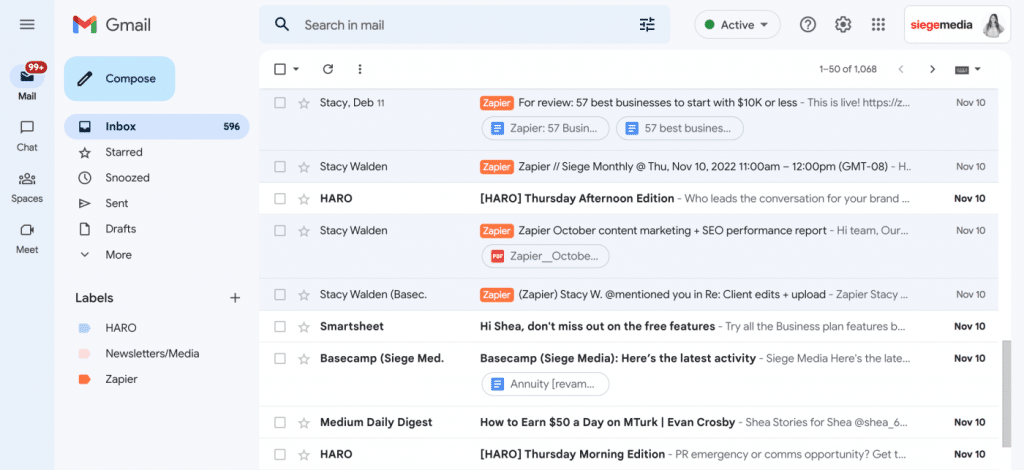
Outlook’s Customized Folder Structure
Outlook provides a folder structure that can be easily customized to suit your preferences. For individuals who appreciate structure and organization, this platform can provide a sense of calm amidst the overwhelming influx of emails.
Mobility and Accessibility
Gmail’s Mobile Mastery
The mobile application for Gmail is the perfect companion for busy email managers who are always on the move. The mobile app effortlessly translates the desktop experience, making it easy for me to manage emails on the go, even during my morning commute.
Achieving Seamless Synchronization Across Devices with Outlook
Outlook also stands out for its exceptional mobility. Experience a seamless and uniform interface across all your devices, allowing you to effortlessly check emails on your laptop, tablet, or smartphone. Flexibility is highly sought after in today’s work environment.
Productivity and Workflow
Maximizing Efficiency with Gmail’s Workflow Tools
The integration of Gmail with Google Workspace significantly boosts productivity. Creating and editing documents directly within the email platform enhances efficiency by eliminating the need for frequent app-switching.
The Power of Outlook’s Task Management
Outlook’s task management tools are incredibly effective for those who value productivity. This feature allows flagged emails to seamlessly transition into tasks, effectively converting your inbox into a highly efficient to-do list. As a result, you can rest assured that no task will be overlooked or forgotten.
Gmail vs Outlook: Customer Support and Reliability
The Dependability of Gmail
I have rarely experienced any downtime in all my years of using Gmail. Google’s infrastructure is highly reliable, guaranteeing uninterrupted email service. This is essential for email managers who depend on consistent communication.
Outlook’s Supportive Network
Outlook’s customer support network is truly exceptional. Their prompt and helpful support has been a lifesaver during a few email emergencies. A dependable support system can be a crucial lifeline in the digital realm.
Pricing and Plans
Gmail’s Complimentary Features
Gmail’s free plan is a fantastic option for individual users, providing ample storage and a wide range of features at no cost. It’s hard to find a better option for managing personal emails.
Microsoft 365 Plans for Outlook
Within the Microsoft 365 ecosystem, Outlook provides a variety of plans tailored to businesses of any size. This subscription model offers a wide range of tools, making it a comprehensive option for managing professional emails.
Which One Is Better, Outlook or Gmail?
This depends on individual preferences and needs. Outlook excels in corporate environments with Microsoft integration, while Gmail offers a user-friendly experience with robust Google collaboration. Choose based on your workflow and ecosystem preferences.
Do Professionals Use Gmail Or Outlook?
Professionals use both Gmail and Outlook, with preferences varying based on individual needs and organizational ecosystems. The choice often depends on familiarity, integration requirements, and personal workflow preferences.
I have created a checklist to help you choose which platform works best for you below:
Can I Use Outlook For Personal Email?
Absolutely, yes! Outlook is versatile and suitable for personal mail, offering a user-friendly interface, robust features, and seamless integration with various platforms.
Why Do Companies Use Outlook Instead of Gmail?
Companies often choose Outlook for seamless integration with Microsoft 365, providing a cohesive ecosystem for email, collaboration, and productivity tools, aligning with corporate preferences and leveraging familiarity within the Microsoft suite.
What Are The Disadvantages Of Outlook Over Gmail?
Outlook’s disadvantages over Gmail include a longer learning curve, less intuitive search functionality, and limited free storage space. Integration with non-Microsoft programs may be less seamless, affecting collaboration for users outside of the Microsoft ecosystem.
Which Is Safer, Outlook Or Gmail?
Both Gmail and Outlook prioritize security, using advanced measures like encryption and two-factor authentication. The choice between them depends on user practices and preferences rather than inherent safety features.
Can I Use Gmail and Outlook Together?
Yes, you can use Gmail and Outlook together. Gmail for personal emails and Outlook for professional ones, syncing both for seamless access and organization.
Gmail dominates the email management market with over 43% market share globally, making it the most widely used email platform worldwide.
What Are The Top Countries That Use Gmail?
The top countries that use Gmail are the United States, India, Brazil, Japan, and Indonesia, based on user statistics and market penetration.
Final Thoughts
It is clear from this thoughtful analysis of Gmail and Outlook that both platforms offer distinct advantages. Choosing between Gmail and Outlook as your email manager depends on your individual requirements and preferences.
I’ll encourage you to share your own insights from your inbox. Which platform do you find most appealing, and what makes it stand out to you? Let’s keep the conversation going and work together to improve our email management skills.
- The 2024 Showdown: Unveiling The True Best Email Services For Every Need
- DIGITAL CUSTOMER EXPERIENCE: A Complete Guide
- GMAIL BUSINESS: How it Works & How to Create it
- HOW TO CREATE AN OUTLOOK ACCOUNT: Detailed Simple Steps
